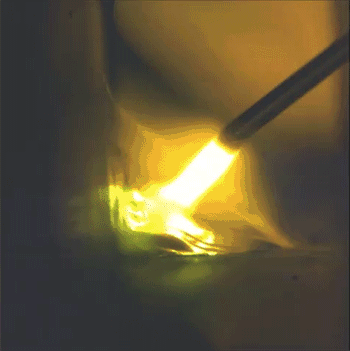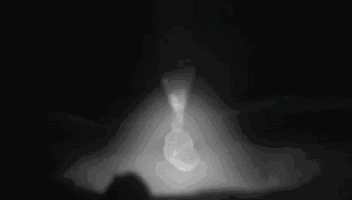According to the welding parameters from small to large, they are: short-circuit transition, droplet transition, spray transition
1. Short-circuit transition
The molten droplet at the end of the electrode (or wire) is in short-circuit contact with the molten pool. Due to the strong overheating and magnetic contraction, it breaks and directly transitions to the molten pool. This is called short-circuit transition.
Short-circuit transition can achieve stable metal droplet transition and stable welding process under low-power arc (low current, low arc voltage). Therefore, it is suitable for welding thin plates or welding with low heat input.
The parameters achieved are: welding current is less than 200A
Xinfa welding equipment has the characteristics of high quality and low price. For details, please visit: Welding & Cutting Manufacturers - China Welding & Cutting Factory & Suppliers (xinfatools.com)
2. Droplet transition (granular transition)
When the arc length exceeds a certain value, the molten droplet can be kept at the end of the electrode (or wire) to grow freely by the action of surface tension. When the force that causes the molten droplet to fall (such as gravity, electromagnetic force, etc.) is greater than the surface tension, the molten droplet will leave the electrode (or wire) and freely transition to the molten pool without short circuit, as shown in Figure 4.
The droplet transition form can be divided into coarse droplet transition and fine droplet transition. Coarse droplet transition is the form in which the molten droplet freely transitions to the molten pool in the form of coarse particles. Since coarse droplet transition has large splashes and unstable arc, it is not desirable for welding work.
During the welding process, the size of the molten droplet is related to the welding current, the composition of the welding wire, and the composition of the coating.
The conditions for realization are: welding current 200-300A (100% CO2), argon-rich mixed gas 200-280A.
3 Spray transition (also called jet transition)
The form in which the molten droplets are in the form of fine particles and quickly pass through the arc space to the molten pool in a spray state is called spray transition. The size of the molten droplet decreases with the increase of the welding current.
When the arc length is constant, when the welding current increases to a certain value, the spray transition state appears. It should be emphasized here that in addition to a certain current density, a certain arc length (arc voltage) must be required to produce a spray transition. If the arc voltage is too low (the arc length is too short), no matter how large the current value is, it is impossible to produce a spray transition.
The characteristics of spray transition are fine molten droplets, high transition frequency, molten droplets moving toward the molten pool at a high speed along the axial direction of the welding wire, and have the advantages of stable arc, small spatter, large penetration, beautiful weld formation, and high production efficiency.
Post time: Aug-21-2024





